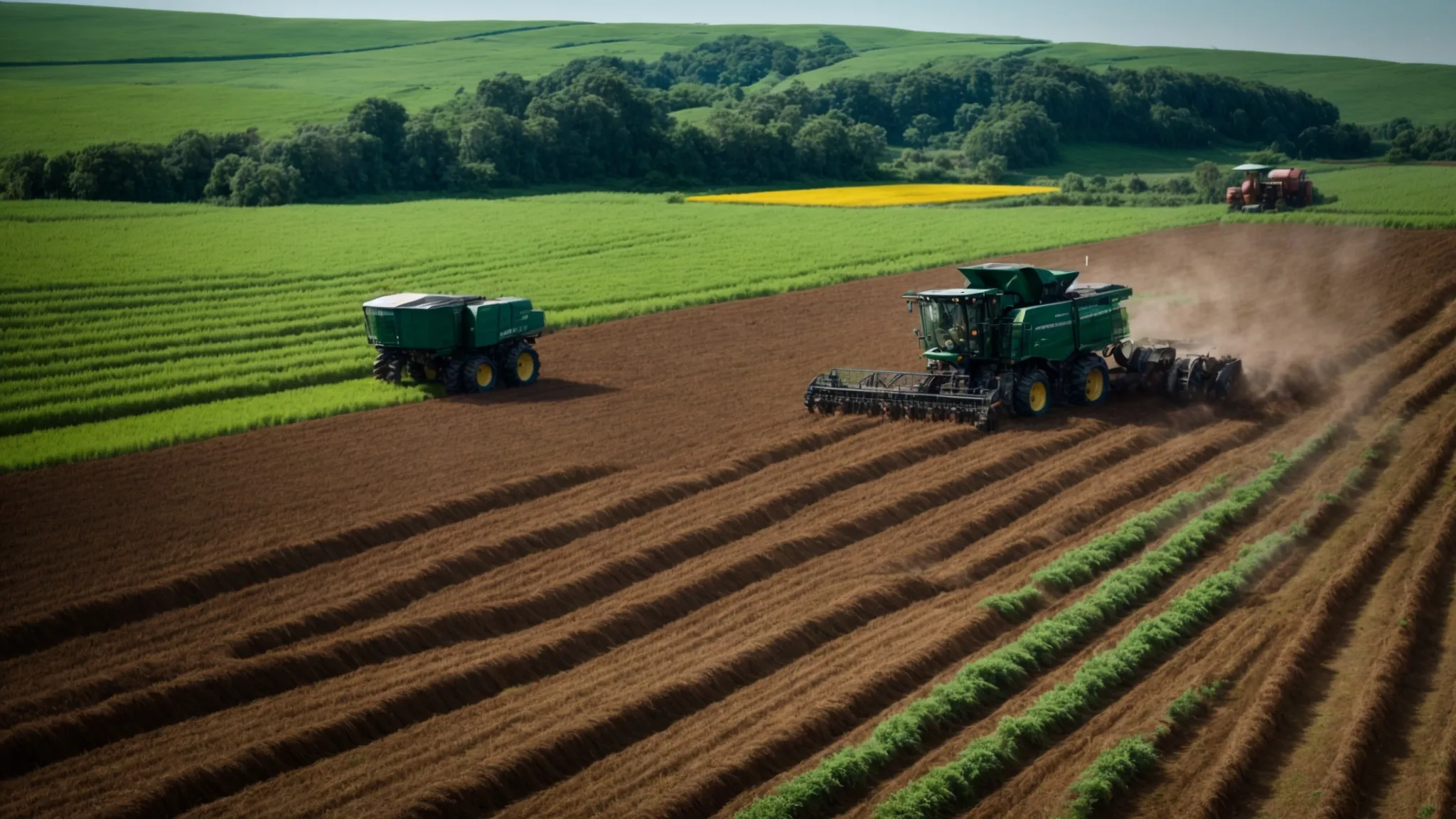
Key Resources for Successful Large-Scale Agriculture Operations
To operate a large-scale farm effectively, it’s essential to have a well-coordinated array of resources. These include modern equipment, advanced technology, skilled labor, astute financial management, and a clear understanding of governmental regulations. Each aspect plays a pivotal role in maintaining productivity and profitability in today’s competitive agricultural landscape. Below, we explore essential components of successful large-scale agricultural operations and how they interlock to create a well-oiled agribusiness machine. Keep reading to delve into the keys to cultivating success on a vast scale.
Essential Equipment for Large-Scale Farming Efficiency

Successful large-scale farming relies on powerful, efficient equipment that meets modern agricultural demands. High-horsepower tractors, harvesters, and precision planters help maximize yields and minimize waste, while advanced irrigation systems ensure optimal water use in drought-prone regions. Effective water management remains critical to maintaining crop health and profitability under growing climate challenges.
Beyond traditional machinery, many farms now adopt autonomous equipment to cut labor costs and boost productivity. Paired with reliable storage solutions like silos and cold units, these innovations help preserve harvest quality and reduce losses. Integrating tools from leading ERP vendors can further streamline operations, from planting to storage, ensuring efficiency across every stage of production.
Leveraging Agricultural Technology and Software
Adopting technology and ERP vendors specializing in agricultural software transforms farm management through precision agriculture. GPS-enabled equipment, drones, and crop sensors deliver real-time insights that enhance productivity and optimize resource use. These tools, paired with advanced data analytics, empower farmers to make evidence-based decisions, track operations, and manage inventories efficiently.
Integrating agricultural software with market analytics and weather forecasting further refines planning and profitability. Farmers can anticipate demand, schedule planting and harvesting for peak market conditions, and strengthen supply chain coordination. Such integration ensures perishable goods move efficiently from farm to fork, reducing losses and improving quality across the entire agricultural value chain.
The Role of Skilled Labor and Training in Agriculture Expansion
Skilled labor remains the backbone of modern agriculture, complementing the growing role of technology. Workers proficient in advanced farming techniques, equipment operation, and crop science drive productivity and innovation. Continuous training ensures they stay current with evolving agricultural methods, while strong management skills—communication, leadership, and strategic planning—are equally vital for handling large-scale operations effectively. Agribusinesses must invest in staff development to cultivate both technical expertise and business acumen.
Regional shortages of skilled labor present challenges, prompting many farms to partner with educational institutions to build a reliable talent pipeline. These collaborations produce training programs tailored to industry needs, ensuring a workforce capable of leveraging technology while preserving the essential human element of agriculture.
Financial Management and Investment Strategies in Agribusiness

Managing the financial landscape of large-scale agriculture demands precise planning and disciplined investment. Successful operations rely on effective capital allocation to balance liquidity during downturns and fund growth during profitable cycles. Understanding cost structures, cash flow, and financial risks ensures stability, while forming partnerships with banks, investors, or government programs provides access to favorable funding. Every borrowing decision—whether for land expansion or equipment upgrades—must be backed by strong return projections to sustain profitability.
Price volatility adds another layer of complexity, making diversification and commodity hedging vital tools for protection. Forward-thinking farms reinvest earnings into research, technology, and crop innovation to enhance productivity. This ongoing reinvestment drives scalability, competitiveness, and resilience in an evolving agricultural economy.
Navigating Government Policies and Subsidies for Agriculture Growth
Large-scale agricultural operations must skillfully manage shifting government policies, subsidies, and environmental regulations. Staying informed about these frameworks not only ensures compliance but also creates opportunities to gain financial advantages through grants or incentives tied to specific crops or sustainable practices. Building strong relationships with government agencies and advocacy groups helps farmers stay ahead of regulatory changes and even influence policies that affect their industry.
Adopting eco-friendly farming methods can unlock tax benefits and strengthen a farm’s reputation for sustainability. For operations engaged in export, monitoring international trade agreements is equally vital. Anticipating shifts in trade policy allows agribusinesses to adapt quickly, protect profitability, and maintain a competitive edge in global markets.
Overall, successful large-scale agriculture hinges on the harmonious interplay of advanced equipment, innovative technology, skilled labor, astute financial management, and tactful navigation of government policies. When these elements are strategically aligned, agricultural enterprises can maximize their potential, ensuring sustainable growth and resilience in the face of an ever-changing global market.
